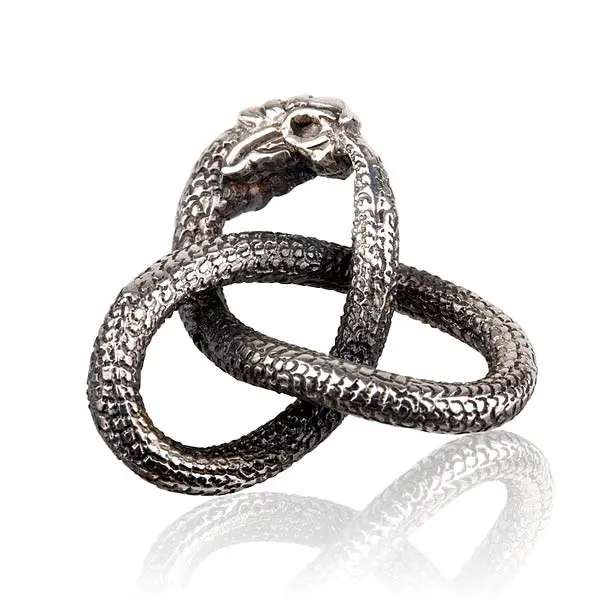The name Ouroboros is Greek in origin. Oura means tail, while Boros is translated as eating. Taken together, it means ‘tail devourer’ or ‘one who eats the tail’. As a symbol, it depicts a serpent consuming its own tail.
The Ouroboros is one of the world’s most ancient mystical symbols, appearing in Egypt as early as 1600 BC. The Phoenicians adopted it, and later, the Greeks gave it its name. Over the centuries, it has been subject to several interpretations by different cultures. One is that it represents the Universe’s eternally cyclic nature, which creates life out of destruction. In alchemy, it symbolizes the continuous renewal of birth and death that alchemists struggle to break free from. Gnosticism and Hermeticism also hail the Ouroboros as representative of cyclical natural life and the unity of opposites. Gnostics, in particular, regard it as a sign of the transcendence of duality and a connection to Abraxas, the solar god.
The mathematical symbol for infinity is said to be derived from a version of Ouroboros, with the serpent looped once before consuming its own tail. The Ouroboros also appears in numerous examples of Masonic imagery, particularly during the 17th century.

Symbols Menu:
» Amulet
» Ajna
» Arsenic
» Merkaba
» Hung
» Yin Yang
» bindi
» IK Onkar
» Khanda
» Halo
» jiahu
» Tau
» Uraeus
» Menorah
» Quincunx
» Tilaka
» Taijitu
» Vajra
» Chai
» Chi Rho
» Bagua
» Dragon
» Hunab Ku
» Caduceus
» Infinity
» Ichthus
» Hedjet
» Lauburu
» Om
» Ankh
» Chalice
» Pentacle
» Maat
» Ogham
» Mandala
» Kartika
» Khamsa
» Heart
» Labrys
» Sun Face
» Raven
» Triskele
» Scarab
» Dove
» Hanukia
» Anubis
» Trishula
» Durga
» Mezuzah
» Bay Tree
» Geruda
» Kinnara
» Quito
» Condor
» Blue Jay
» Falcon
» Makara
» Rosary
» Uluru
» Apsaras
» Hanuman
» Serpent
» Minotaur
» Mercury
» Apex
» Vestra
» Yoni
» Astarte
» dakini
» Calabash
» Mandrake
» Rebis
» Typhon
» Vegvísir
